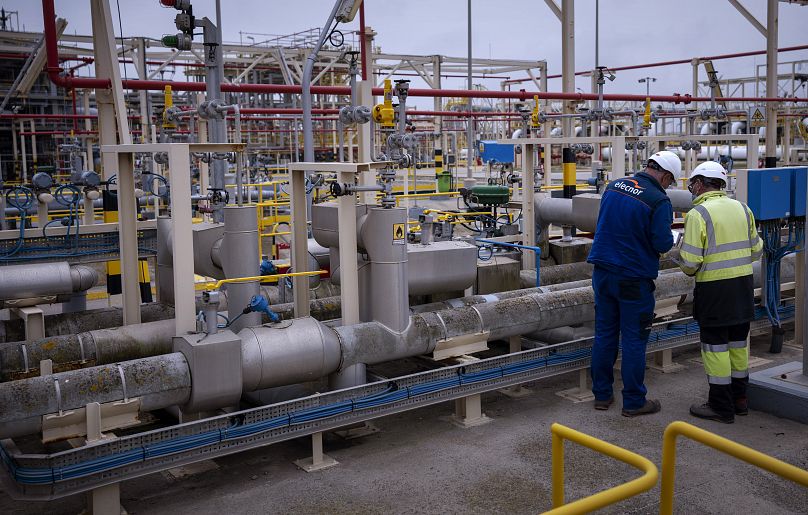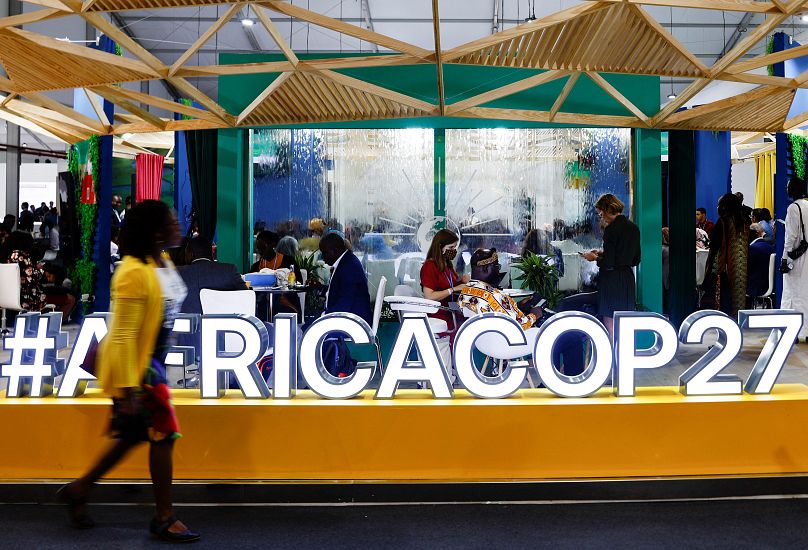Protests continued at the conference with activists calling out fossil fuel lobbyists and asking for climate justice
In Egypt today, discussions and announcements focused on science and youth.
Protests continued at the conference with activists calling out fossil fuel lobbyists and asking for climate justice. World leading scientists also presented their biggest insights from this year’s breakthrough research.
So what happened on the fifth day of COP27?
1. Experts reveal the ten biggest climate insights from 2022
Scientists revealed this year’s biggest climate insights from the impact on the health of humans to the need for loss and damage funding.
These insights are intended to help policymakers figure out what they need to do to combat climate change.
They were put together by Future Earth, The Earth League, World Climate Research Programme (WCRP), plus scientists from around the world using the latest research.
“We need an urgent, global and coordinated response to reverse the growth of greenhouse gas emissions to secure a safe and just future for humankind,” says Wendy Broadgate, global hub director (Sweden) for Future Earth.
“In a year of compounding crises, including geopolitical instability, extreme weather events, and reverberations from the pandemic, 10 New Insights in Climate Science delivers essential research findings to inform decisions.”
2. Dash for gas following Russia’s invasion of Ukraine is endangering climate targets
Countries scrambling to source more natural gas following Russia’s invasion of Ukraine could put climate goals at risk according to Climate Action Tracker.
"We're witnessing a major push for expanded fossil gas (LNG) production and import capacity across the world – in Europe, Africa, North America, Asia and Australia – which could cause global emissions to breach dangerous levels," said Bill Hare, CEO of research institute Climate Analytics which helped put together the report.
Planned natural gas projects could emit ten per cent of the world’s remaining carbon budget - the cumulative amount that can be emitted if warming beyond 1.5C is to be avoided.
The International Energy Agency says that no new oil and gas fields should be opened in order to stay on track for the Paris Agreement target.
3. Fossil fuel lobbyists outnumber almost every national delegation at COP27
Data analysis from campaign groups Global Witness, Corporate Accountability and Corporate Europe Observatory found that 636 oil and gas lobbyists registered to attend COP27. That is 25 per cent more than attended COP26 in Glasgow last year.
A spokesperson for the campaign groups called the size of the group a “twisted joke”.
“Tobacco lobbyists wouldn’t be welcome at health conferences, arms dealers can’t promote their trade at peace conventions,” they said.
“Those perpetuating the world's fossil fuel addiction should not be allowed through the doors of a climate conference.”
A broad coalition of 126 groups is now demanding that fossil fuel lobbyists be excluded from climate talks. They have submitted this demand to the United Nations Framework Convention on Climate Change - the body that oversees COP.
4. Deforestation in the Congo Basin rainforest increased by five per cent in 2021
A report released today revealed that deforestation has surged in the world’s second biggest rainforest.
According to Climate Focus, it is now disrupting this vital ecosystem’s role in cooling the planet as the pace of deforestation increased by five per cent in 2021.
Destruction of the rainforest was worst in the Central African Republic where there was a 71 per cent increase in the rate.
Just two of the six Congo Basin countries that signed a 2021 commitment to halt and reverse deforestation by 2030 - Congo and Gabon - were on track to meet the goal.
“The Congo Basin Forest is at a crossroads,” said Dr Marion Ferrat, senior consultant at Climate Focus and lead author of the report.
“Deforestation has been low compared to other tropical regions, but we are seeing an upward trend of fragmentation and forest loss since 2020.
“If this trend continues, we risk losing the largest remaining intact forest in the tropics along with its immense and irreplaceable value for biodiversity, climate, and people.”
5. Who is actually at COP27 in Egypt?
More than 33,000 people registered to attend COP27 making it possibly the largest summit in COP history.
An interesting analysis from Carbon Brief has looked at the provisional list of people registered to create a breakdown of attendees.
The biggest group of delegates is representing parties - that’s people from the nation-states and EU. The country with the biggest delegation is the UAE with more than 1,000 people followed by Brazil with 574.
Carbon Brief also looked at the gender balance at the event. Over time, these conferences have become more equal.
COP21 had the average delegation at a mix of 88 per cent male and 12 per cent female.This year the provisional gender balance at COP27 is an average of 63 per cent male and 37 per cent female.
There are just two all male delegations registered for the conference - North Korea and Turkmenistan. There are no all female delegations but 26 parties have more female delegates than male.













